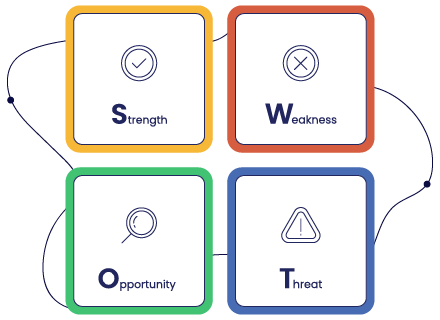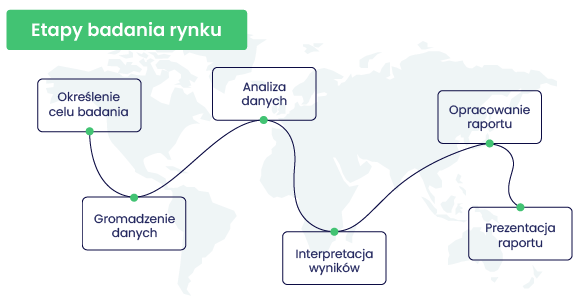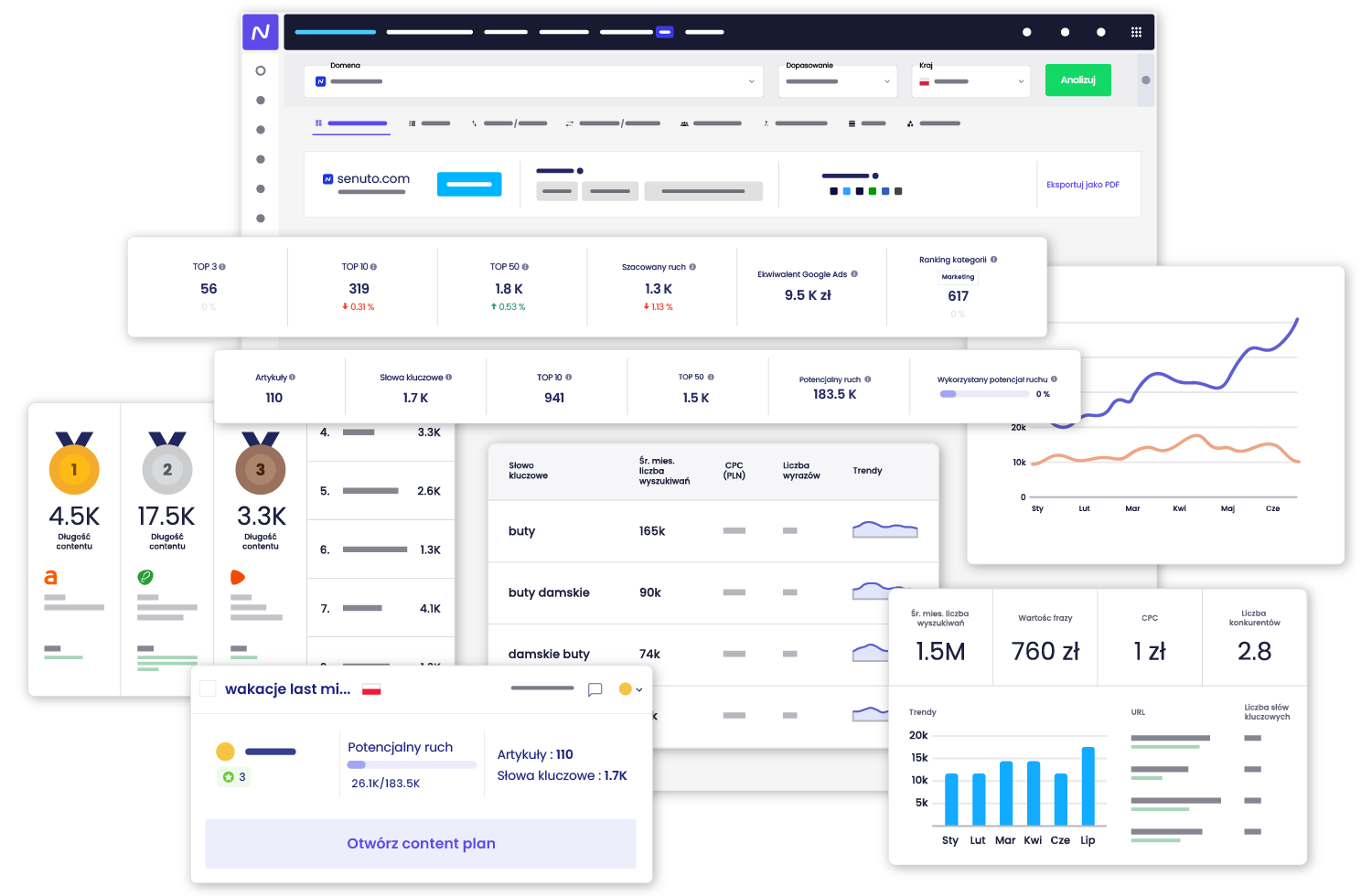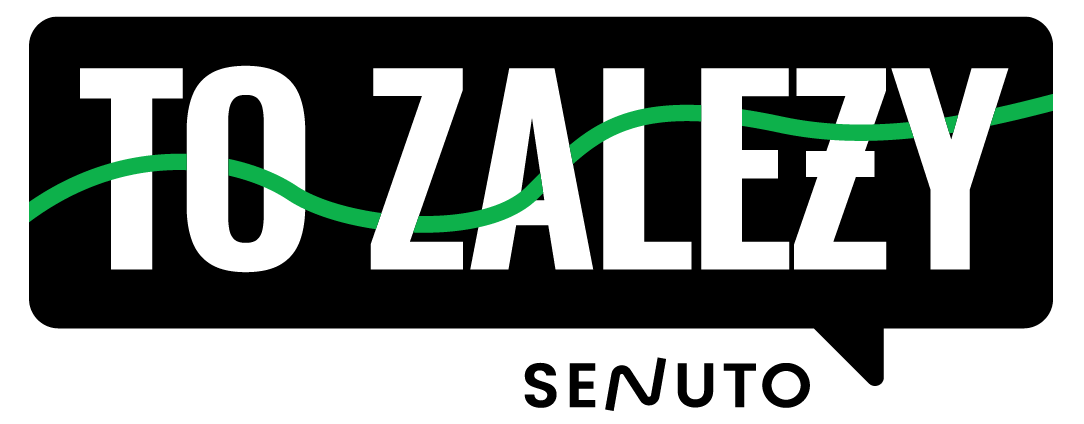In Senuto’s strategy of activities, we have permanently included participation in conferences and events from the SEO industry and beyond. The main objectives of our presence there are to gain new contacts and try to sell the tool to new customers. But is this the only thing that drives us? No. Another very important aspect of trips of this type is market research, or more precisely, checking what this market expects from us. This is where the Product Department goes all in white and collects feedback on Senuto, that is… doing a market needs survey. .
At the same time, conferences are an opportunity to meet face-to-face with competitors and talk. Fortunately, in our industry, communication between individual teams and service providers stands at a really high level. Full culture! We are happy to exchange experiences and talk to each other. But what to do when your industry doesn’t organize such conferences or you can’t attend them? What to bet on if your competitors are not as friendly as here? In such a situation you are left with a market analysis using the Internet.
What is market research?
Market research is a process that allows decision-makers to gain valuable information about their target audience and effectively tailor marketing strategies to them. It provides the foundation for:.
-
- effective planning,
- decision-making,
- identify new opportunities in a competitive market.
Market research includes analysis of customer preferences and needs, opinions on products and services, competitive analysis, and identification of trends and future prospects. .
Why conduct a market analysis?
One of the key goals of market research is to better understand members of the target audience and identify their preferences, needs and challenges they face on a daily basis. This allows marketing heads to adjust not only their products and services, but also their communications to best meet customer expectations. .
Market research also helps identify potential niches and new business development opportunities. And this means only one thing: building marketing strategies based on solid foundations and targeting the right market segments..
Methods of market analysis
There are several methods and tools for conducting market analysis. This is also the point at which it is worth mentioning that you can obtain information from multiple sources depending on the method you choose to conduct the analysis..
SWOT analysis
One of the key market analysis methods used by large companies is SWOT analysis. This technique allows you to identify the strengths and weaknesses of your own company and identify opportunities and threats from the market environment. .
SWOT analysis also allows you to:
-
- assess the competitiveness of the company,
- identification of areas where improvements can be made,
- define areas to focus on taking advantage of emerging opportunities.

Surveying customer feedback and opinions
Another effective method is to survey customer feedback and opinions. Decision makers use surveys, interviews and social media monitoring to learn about customers’ opinions, preferences and needs. This form of two-way communication allows for direct feedback which is extremely valuable for improving products and services and adjusting marketing strategies..
Competitive analysis
Competitor analysis is another important method you can apply to your business. It involves researching and comparing your competitors’ activities, such as:.
-
- marketing strategies,
- product and service offerings,
- market positioning, etc.
Understanding your competitors’ strengths and weaknesses allows you to locate gaps in the market and develop unique marketing strategies to effectively differentiate your company from the competition. .
Market trend analysis
Market trend analysis is another aspect that – as head of marketing – I pay attention to. Tracking industry trends, changes in customer preferences, technological innovations or regulatory changes allows you to adapt your marketing strategies to current market conditions and ensure your company’s competitiveness in the long run.
Analysis of data and market indicators
Finally, analyzing data and market metrics is a key method that enables marketing executives to monitor the effectiveness of their operations. By analyzing metrics such as sales metrics, market share, and marketing ROI, you can assess the effectiveness of your marketing efforts and adjust your strategy based on the results.
As you can see, market analysis methods are an indispensable part of the market research process for large companies. Using SWOT analysis, customer surveys, competitive analysis, tracking market trends and analyzing market data and metrics allows you to get a comprehensive picture of the market and adjust marketing strategies to current conditions and customer needs. .
I also have to admit that these methods are extremely valuable for making accurate decisions and achieving success in the competitive SaaS market..
What should a market analysis contain?
A market analysis conducted for companies should include several key elements that provide vital information and guidance for strategic decision-making. These include a study of the target audience, an assessment of the competition, and industry trends.
First and foremost, a market analysis should include a detailed study of your target audience, i.e. the customers you are focusing on. You need to study their preferences, needs, buying behavior and motivations in order to better understand how to effectively reach them with your offering. .
Another important part of market analysis is to evaluate your competitors. Familiarize yourself with their product or service offerings, marketing and pricing strategies, market positioning methods and unique features that attract customers. In this way, you will much more easily and, above all, effectively identify the strengths and weaknesses of your competitors, rework your own strategy or improve the current one. The result? You will distinguish your company from its rivals. .
In your market analysis you must also keep in mind industry trends and market changes. Regularly keep track of new technologies, innovations, customer preferences and changes in regulations that may affect the market. Ideally, start treating it as a pleasure rather than an unpleasant chore. Then a lot of information will almost spontaneously come to your attention. This will also enable you to adapt your marketing strategies to the dynamically changing environment and keep your company competitive in the market..
Market analysis should also include an assessment of market strength and growth potential. Examine, among other things:.
-
- market size,
- market share,
- growth projections,
- market segmentation.
With such data, assess the scale of business opportunities. Knowing the size of the market and potential growth areas will allow you to focus your marketing efforts on the most promising areas and achieve greater success. .
Last but not least – market analysis should include the SWOT analysis described above. This analysis allows you to identify your company’s unique competitive advantages and areas that need improvement. SWOT analysis is an extremely valuable tool for developing marketing strategies based on real data and positioning the company in the market..
A comprehensive market analysis should include:.
-
- study of the target audience,
- competitor evaluation,
- tracking trends,
- assessing market strength,
- SWOT analysis.
These elements provide the necessary information for sound decision-making and an effective marketing strategy. Market analysis is crucial for a company’s development in the competitive environment of the industry and allows it to better adapt to the needs of customers and take advantage of existing growth opportunities.
Questions to ask yourself during a market research
Market research you can organize for yourself quite easily and dress it up into an effective process. It will also consist of a series of questions that will help you gain relevant information and tips that are crucial when developing an effective marketing strategy. .
Questions about your target audience
- Who are our potential customers?
- What are their preferences, needs and expectations?
- What are our unique competitive advantages?
- What differentiates our company in the SaaS market?
- Who are our main competitors?
- What are their strengths and weaknesses?
Questions about trends and changes in the market
- What are the latest trends in the SaaS industry?
- What technologies and innovations are likely to impact our market?
- What are the potential growth areas?
- Where can we find new opportunities to grow our business?
Questions for marketing purposes
- What are our marketing goals?
- Do we want to increase brand awareness, attract new customers or increase retention?
- What is the market value and growth forecast?
- Are our marketing activities delivering adequate returns on investment?
Customer feedback questions
- What is the feedback and opinions of our customers about our products and services?
- What can be improved to meet their expectations even better?
Asking yourself these questions will give you vital information and direction for your marketing strategy. Market research is an indispensable part of the marketing planning and decision-making process, and the answers to these questions provide valuable insights and information needed to operate effectively in a competitive marketplace.
Remember, too, that the list I have shared with you is an absolute foundation that you can boldly expand and modify according to your own needs or ideas. .
How to conduct a market study?
Stages of market research
Company market research consists of several key stages that provide mCi with in-depth knowledge of the market environment and customer needs. .
The first stage is to define the objectives of the studythat is, to precisely define the information you want to obtain and the goals you want to achieve. Next, develop a research plan, including the methods, techniques and tools you will use, such as surveys, interviews, data analysis or social media monitoring.
The second stage is data collection.Decision makers will gather information from various sources, such as market research, competitive analysis, customer surveys or market data. It is important to ensure the reliability and credibility of the data, so be sure to use appropriate sampling and data analysis methods..
The next step is to analyze the collected data. Marketing managers will carefully analyze the collected information to draw meaningful conclusions and identify key trends, customer preferences, and opportunities and threats in the market. The use of analytical tools and techniques, such as SWOT analysis, market segmentation and trend analysis, enables an accurate assessment of the market situation.
After the analysis, the results are interpreted and specific conclusions are drawn. This is where the all-white analysts step in, whose job is to turn the collected data and conclusions into practical guidance for marketing strategy. It is on this basis that you then make decisions about brand positioning, shaping product offerings or choosing the right channels for communicating with customers..
The final stage is the development of the market research report. Marketing managers prepare the report, which should include:.
-
- a summary of the collected data,
- analysis,
- conclusions,
- recommendations.
This report is the basis for all marketing activities and provides important information to other company departments. .
Conducting all these stages of market research adds up to the knowledge that is essential for successful operation in a competitive market. The study allows you to better understand customer needs, identify competitive advantages, exploit potential areas of growth and adapt your marketing strategy to current market conditions.

Tools you will use during market research
These are some popular online tools you can use to conduct market research:.
Online survey platforms:Tools such as SurveyMonkey, Google Forms, Typeform, Qualtrics allow you to create and distribute online surveys to gather feedback and data from respondents.
Social media monitoring tools:Tools such as Hootsuite, Sprout Social, Brandwatch Analytics,Brand24 allow you to track mentions of your company, competitors and industry on social media, which provides information on customer feedback and trends.
Online data analysis tools:Google Analytics, Kissmetrics, Mixpanel are tools that allow you to monitor website traffic, analyze user behavior, identify traffic sources and conversions to understand customer interactions with your brand..
Online interviewing platforms:Tools such as Zoom, Microsoft Teams, Skype, Slack offer video and audio features that enable live online interviews with respondents, regardless of their location.
Tools for online competitive analysis:Platforms such as Senuto allow you to analyze the competitive activities of companies, monitor their organic traffic, search engine positions. In addition, you will examine keywords and find out what content is missing from your site.
 .
.
Online communities and research panels: Platforms such as Toluna, SurveySparrow, Cint provide access to research panels and online communities that can be used to conduct surveys on a specific group of respondents..
Additionally, I also recommend using:.
-
- Looker Studio – a tool from Google (former Data Studio) for reporting and showing data in a clear and organized way. Useful for presenting market analysis
-
- Miro – a very convenient interface for writing down and aggregating any conclusions and information generated during analysis. The multitude of forms and possibilities of presenting “non-countable” data is almost infinite
These are just a few examples of tools that can be used for market research. The choice of specific tools depends on the objectives of the study, available resources, and the characteristics of the industry and market. .
How to present the results of a market analysis?
Presentation of market analysis results is very often one of the most important steps in companies. Proper presentation makes it definitely easier:.
-
- understand the information gathered,
- share conclusions and recommendations with other company departments,
- take appropriate marketing actions.
When presenting the results of the market analysis, it is important, first of all, to convey the information clearly and accessibly..
Divide the topic of visualization and presentation of results into several steps..
Step 1: develop a presentation structure
It should include an introductory discussion of the study’s objectives, methodology, as well as a presentation of the main conclusions and recommendations. It is imperative that you take care of the logical layout of the presentation so that the information is presented in a way that is easy to understand and remember. To this end, boldly use graphics, charts, tables and infographics to visually enhance the presentation and more easily convey relevant information..
Step 2: present the collected data and analysis results
Marketing executives should focus on the key findings, trends and benchmarks to the pre-established goals of the study. It is important to present the most important information first and foremost. Avoid excessive details that will overwhelm the audience and cloud the picture. .
Step 3: discuss conclusions and recommendations
Remember to present specific actions and strategies that result from the market analysis. Pointing out areas for improvement, new market opportunities or brand positioning recommendations will help put your marketing efforts on the right track..
When presenting the results of a market analysis, it is important to consider the audience and tailor the message to their needs. So adjust the level of detail and language used in the presentation to make it understandable to all participants. Also schedule time for questions and discussion to allow for a better understanding of the information gathered and to clarify any doubts..
The presentation of the results of the market analysis should focus on conveying the relevant information in a clear, accessible and understandable manner for all participants. Considering the appropriate structure, using visual elements, highlighting the main conclusions and recommendations, and considering the audience are key elements of a successful presentation of market analysis results..
Some examples of types of market research
Customer preference research
This research aims to understand customers’ preferences, needs and expectations of products or services. It may include a survey or interviews with customers to help identify their preferences, motivations, and purchase decision factors..
Customer satisfaction survey
This survey is designed to assess customer satisfaction with products or services offered by a company. It can include a survey or interviews to examine customer satisfaction levels, identify areas for improvement and understand what factors influence customer loyalty.
Competitor analysis
This study focuses on competitive analysis of the market. It includes an examination of marketing strategy, product offerings, pricing, market position and other factors that affect a company’s competitiveness. The goal is to understand the strengths and weaknesses of competitors and identify opportunities and threats to your own company.
Market potential research
This study involves assessing the size, dynamics and potential of the market for a specific product or service. It includes an analysis of demographics, market trends, market size, forecasts and other factors that may affect demand for a particular product or service.
Brand Recognition Study
This survey is designed to measure the degree of brand recognition and awareness among the target audience. It can include questions on brand awareness, associations, logo identification or slogans to assess the level of brand recognition and understand brand perception among customers.
Research market trends and forecasts
This study focuses on identifying current market trends and forecasting future changes. It includes analyzing data, industry reports, research publications and other sources of information to understand market trends and predict future trends.
These are just a few examples of market research. There are many other types of research you can conduct depending on your company’s goals, industry and needs. It is important to tailor your research methodology to your specific requirements and business goals.
How much does a market analysis cost?

The cost of market research can vary depending on many factors, such as:.
-
- scope of the study,
- methods,
- number of respondents,
- tools used,
- access to data,
- degree of complexity,
- time-consuming study.
There is, therefore, no definite answer to the question of the cost of market research, as this is an individual issue for each company..
In my opinion, companies should ask themselves this question in a different way: Can they afford to go to market without such a survey?
Who to commission a market study?
There are many professional research agencies that specialize in conducting market research. These agencies have the necessary experience, know-how and tools to conduct a comprehensive market study according to your needs. Before choosing an agency, it’s a good idea to check their credentials, portfolio and skills in the field you’re interested in. However, with high quality research often comes a high price. .
Before making a decision, carefully evaluate your needs, financial resources and available cooperation options. Regardless of the option you choose, it is important to choose a trusted partner who has experience and competence in conducting market research..
Can I manage on my own?
Yes, it is possible to conduct a market analysis on your own. However, it is worth bearing in mind that market analysis can be a complicated process that requires the right knowledge and skills. If you are not experienced in market analysis, it can be difficult to get a complete and reliable picture of the market situation..
If, however, you are up for the challenge, here are some steps you can take when analyzing the market yourself:.
- Gather data: identify and collect relevant market data, such as demographics, market size, trends, competition, customer preferences, product and service information.
- Use analytical tools: take advantage of analytical tools such as spreadsheets or specialized data analysis software to organize and process the information you collect.
- Analyze data: analyze the collected data, looking for trends, patterns and significant relationships. Use appropriate statistical methods and data analysis techniques to reach valuable conclusions.
- Interpret the results: interpret the collected data and market analysis results, trying to understand what the implications are for your business. Use this information to make strategic marketing decisions.
Remember, however, that self market analysis may be limited by your own skills and available resources. For more advanced market analysis, especially for larger companies, consider using specialists such as research agencies or marketing consultants. Such experts have specialized knowledge and experience in market analysis, which can contribute to better results and more accurate conclusions..
Summary
Market research is a very broad topic that is difficult to encapsulate in a single text. The method presented should effectively help you verify the value of your business idea. It is also worth remembering that market research is not a one-time affair, and it is worth reaching for it often. Especially when introducing a new product/service or if you intend to change the direction of the business. It’s also worth doing on average once a year, so that you always have a fresh understanding of the market and the competition. .
Finally, I am tempted to say: Market research is like a tourist guide to a new city, you can see the sights without it, but with it you will do it better, faster and get the most out of it.
How to do market research for free?
Conducting a completely free market research can be difficult, as there are usually some costs associated with data collection and analysis. However, there are some creative ways that can help you reduce your market research costs. Here are some suggestions:.
Use online tools: There are many free online tools, such as Google Forms, SurveyMonkey or Typeform, that allow you to create surveys and conduct research. You can use these tools to collect feedback and data from your target audience.
Use available public data: There are many public data sources, such as government reports, industry statistics, market research available online that can provide information on market size, trends, demographics and other market factors. You can use this data as a basis for market analysis.
Collaborate with universities or students: Universities and students are often looking for research projects. You may want to consider partnering with local universities or students who can help conduct a market study as part of their research projects.
Take advantage of social media: Social media is a great tool for getting feedback and information from your target audience. You can create surveys or open-ended questions on your social media profiles and encourage your followers to participate in the survey.
Take advantage of your company’s resources: Internal company resources, such as customer databases, sales data or contacts, can provide valuable insights into customer preferences, purchasing behavior and other market data.
It is also important to be cautious and ensure the quality of the data you collect. Try to focus on a target audience that best reflects your clientele and can provide the most valuable information for your business. Despite the limitations of conducting a free market survey, it is still possible to gain useful insights and market intelligence that can support your marketing efforts.
How does a market study look like?
Market research can take a variety of forms depending on your goals, industry and the specific needs of your business. Nevertheless, there are a few key steps that are typically present in the market research process. Here is a general outline of what market research might look like:.
Defining the objectives of the study: First, you need to clearly define the objectives of the market study. Do you want to learn about customer preferences, identify market trends, assess the competition, or perhaps evaluate the effectiveness of your marketing strategy? Defining your objectives will allow you to tailor your methods and tools to your specific needs..
Planning and designing the survey: Next, you need to develop a market research plan. Choose appropriate research methods and tools, such as surveys, interviews, statistical data analysis, etc. Identify the target group, i.e. the people who will be surveyed, and determine the sample size, i.e. the number of respondents needed to obtain representative results..
Collecting data: The next step is to collect data. This may include conducting surveys, interviews, observing customer behavior, analyzing market data, etc. It is important to ensure that the data is collected reliably and in accordance with the chosen research methods..
Data analysis: After data collection, we proceed with analysis. We use analytical tools such as statistics, data analysis techniques, and data processing software to arrive at valuable conclusions and interpretations. We uncover trends, patterns, correlations and identify relevant information for our company..
Presentation and interpretation of results: In the final phase, we present the results of the market study. We report the collected data, present the analysis and conclusions. It is important that the results are clear, understandable and visually appealing. The presentation of the results can include charts, tables, written reports or multimedia presentations.
Conclusions and action strategy: Based on the results of the market research, we draw conclusions and formulate a strategy for marketing activities. We use the information obtained to make business decisions, improve products or services, better target audience, adjust marketing strategy, etc..
It is important that market research is a continuous process and that the results are constantly monitored to enable the adjustment of activities to changing market conditions. Market research is a dynamic tool that provides the information upon which key business decisions are made.
What are the methods of market research?
There are many different market research methods that can be used depending on the research objectives, target audience and available resources. Here are some examples of popular research methods:.
Surveys: Surveys are one of the most commonly used research methods. They can be conducted using paper forms, by phone or online. Surveys can include closed-ended questions (e.g., selecting from a list of answers) or open-ended questions, as well as scale questions to measure respondents’ level of agreement or preference.
Interviews: Interviews involve asking respondents questions directly. They can be conducted in person, by phone or online. Interviews provide a more detailed understanding of respondents’ opinions, needs and expectations, and allow for additional questions to be asked to obtain deeper information.
Observations: Observations involve direct monitoring of consumer or competitive behavior. This can include observing consumer behavior in stores, studying product usage habits or monitoring competitors’ social media activities. Observations provide direct, objective data on market behavior.
Focus groups: Focus groups are discussion sessions in which a group of respondents share their opinions, experiences and views on a specific topic. A moderator leads the discussion, asks questions and stimulates interaction among the participants. Focus groups allow you to explore deeper aspects of a product, service or market..
Desk research: Desk research involves analyzing available sources of information, such as industry reports, government statistics, market research and academic publications. This method makes it possible to collect data that already exists without having to do your own research. It is a relatively inexpensive method, but can be limited by the availability of relevant data.
Marketing tests: Marketing tests involve introducing a new product, service or marketing strategy to the market to evaluate its effectiveness. This can include A/B testing, comparison testing or visual testing. Marketing tests allow measuring customer response and adjusting actions based on the results.
Remember that each method has its own advantages and limitations, so a combination of different methods is often used to obtain comprehensive and reliable data. The choice of appropriate research methods depends on the objectives of the study, the target group and available time and financial resources..
 Michał Dmitrowicz
Michał Dmitrowicz